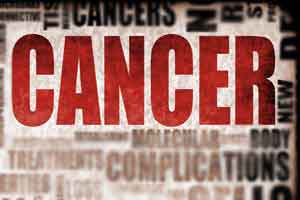- Home
- Editorial
- News
- Practice Guidelines
- Anesthesiology Guidelines
- Cancer Guidelines
- Cardiac Sciences Guidelines
- Critical Care Guidelines
- Dentistry Guidelines
- Dermatology Guidelines
- Diabetes and Endo Guidelines
- Diagnostics Guidelines
- ENT Guidelines
- Featured Practice Guidelines
- Gastroenterology Guidelines
- Geriatrics Guidelines
- Medicine Guidelines
- Nephrology Guidelines
- Neurosciences Guidelines
- Obs and Gynae Guidelines
- Ophthalmology Guidelines
- Orthopaedics Guidelines
- Paediatrics Guidelines
- Psychiatry Guidelines
- Pulmonology Guidelines
- Radiology Guidelines
- Surgery Guidelines
- Urology Guidelines
Cancer risks lowered with increased physical activity

Higher levels of leisure-time physical activity were associated with lower risks for 13 types of cancers, according to a new study published online by JAMA Internal Medicine.
Physical inactivity is common, with an estimated 51 percent of people in the United States and 31 percent of people worldwide not meeting recommended physical activity levels. Any decrease in cancer risk associated with physical activity could be relevant to public health and cancer prevention efforts.
Steven C. Moore, Ph.D., M.P.H., of the National Cancer Institute, Bethesda, Md., and coauthors pooled data from 12 U.S. and European cohorts (groups of study participants) with self-reported physical activity (1987-2004). They analyzed associations of physical activity with the incidence of 26 kinds of cancer.
The study included 1.4 million participants and 186,932 cancers were identified during a median of 11 years of follow-up.
The authors report that higher levels of physical activity compared to lower levels were associated with lower risks of 13 of 26 cancers: esophageal adenocarcinoma (42 percent lower risk); liver (27 percent lower risk); lung (26 percent lower risk); kidney (23 percent lower risk); gastric cardia (22 percent lower risk); endometrial (21 percent lower risk); myeloid leukemia (20 percent lower risk); myeloma (17 percent lower risk); colon (16 percent lower risk); head and neck (15 percent lower risk), rectal (13 percent lower risk); bladder (13 percent lower risk); and breast (10 percent lower risk). Most of the associations remained regardless of body size or smoking history, according to the article. Overall, a higher level of physical activity was associated with a 7 percent lower risk of total cancer.
Physical activity was associated with a 5 percent higher risk of prostate cancer and a 27 percent higher risk of malignant melanoma, an association that was significant in regions of the U.S. with higher levels of solar UV radiation but not in regions with lower levels, the results showed.
The authors note the main limitation of their study is that they cannot fully exclude the possibility that diet, smoking and other factors may affect the results. Also, the study used self-reported physical activity, which can mean errors in recall.
“These findings support promoting physical activity as a key component of population-wide cancer prevention and control efforts,” the authors conclude.
Commentary: Promise of Leisure-Time Physical Activity to Reduce Risk of Cancer
“In sum, these exciting findings by Moore et al underscore the importance of leisure-time physical activity as a potential risk reduction strategy to decrease the cancer burden in the United States and abroad. They demonstrate that high vs. low levels of physical activity engagement are associated with reduced risk of 13 cancer types (including 3 of the top 4 leading cancers among men and women worldwide). The widespread generalizability of these findings is reinforced by the suggestion that the associations persist regardless of BMI or smoking status.
However, additional research, including more formal mediation analyses, on the underlying mechanisms for the recreational physical activity-cancer association should be pursued vigorously,” writes Marilie D. Gammon, Ph.D., of the University of North Carolina at Chapel Hill Gillings School of Public Health, and coauthors in a related commentary.
You can read the full article by clicking on the following link:
- Steven C. Moore, I-Min Lee, Elisabete Weiderpass, Peter T. Campbell, Joshua N. Sampson, Cari M. Kitahara, Sarah K. Keadle, Hannah Arem, Amy Berrington de Gonzalez, Patricia Hartge, Hans-Olov Adami, Cindy K. Blair, Kristin B. Borch, Eric Boyd, David P. Check, Agnès Fournier, Neal D. Freedman, Marc Gunter, Mattias Johannson, Kay-Tee Khaw, Martha S. Linet, Nicola Orsini, Yikyung Park, Elio Riboli, Kim Robien, Catherine Schairer, Howard Sesso, Michael Spriggs, Roy Van Dusen, Alicja Wolk, Charles E. Matthews, Alpa V. Patel. Association of Leisure-Time Physical Activity With Risk of 26 Types of Cancer in 1.44 Million Adults. JAMA Internal Medicine, 2016; DOI:10.1001/jamainternmed.2016.1548

Disclaimer: This site is primarily intended for healthcare professionals. Any content/information on this website does not replace the advice of medical and/or health professionals and should not be construed as medical/diagnostic advice/endorsement or prescription. Use of this site is subject to our terms of use, privacy policy, advertisement policy. © 2020 Minerva Medical Treatment Pvt Ltd